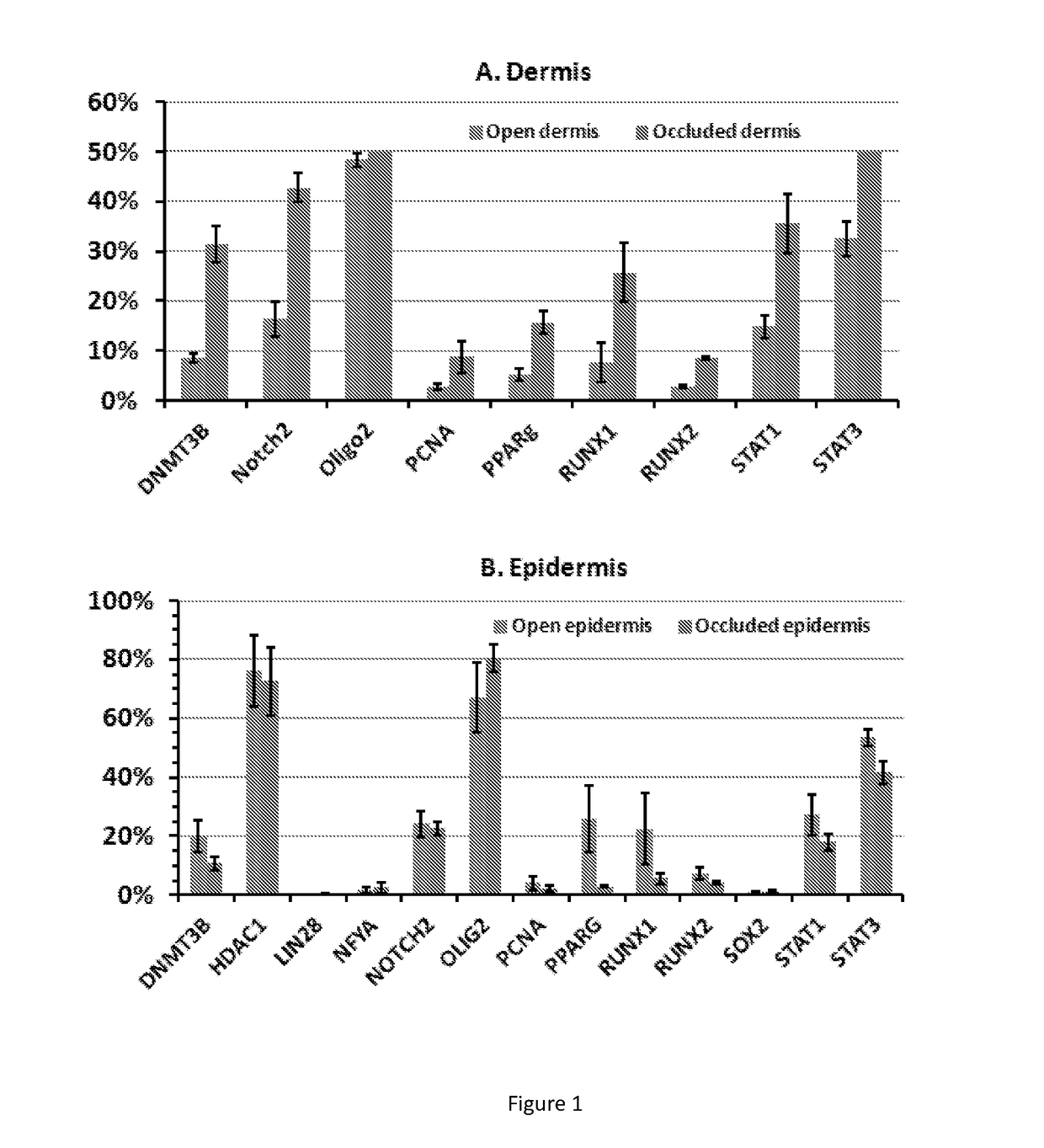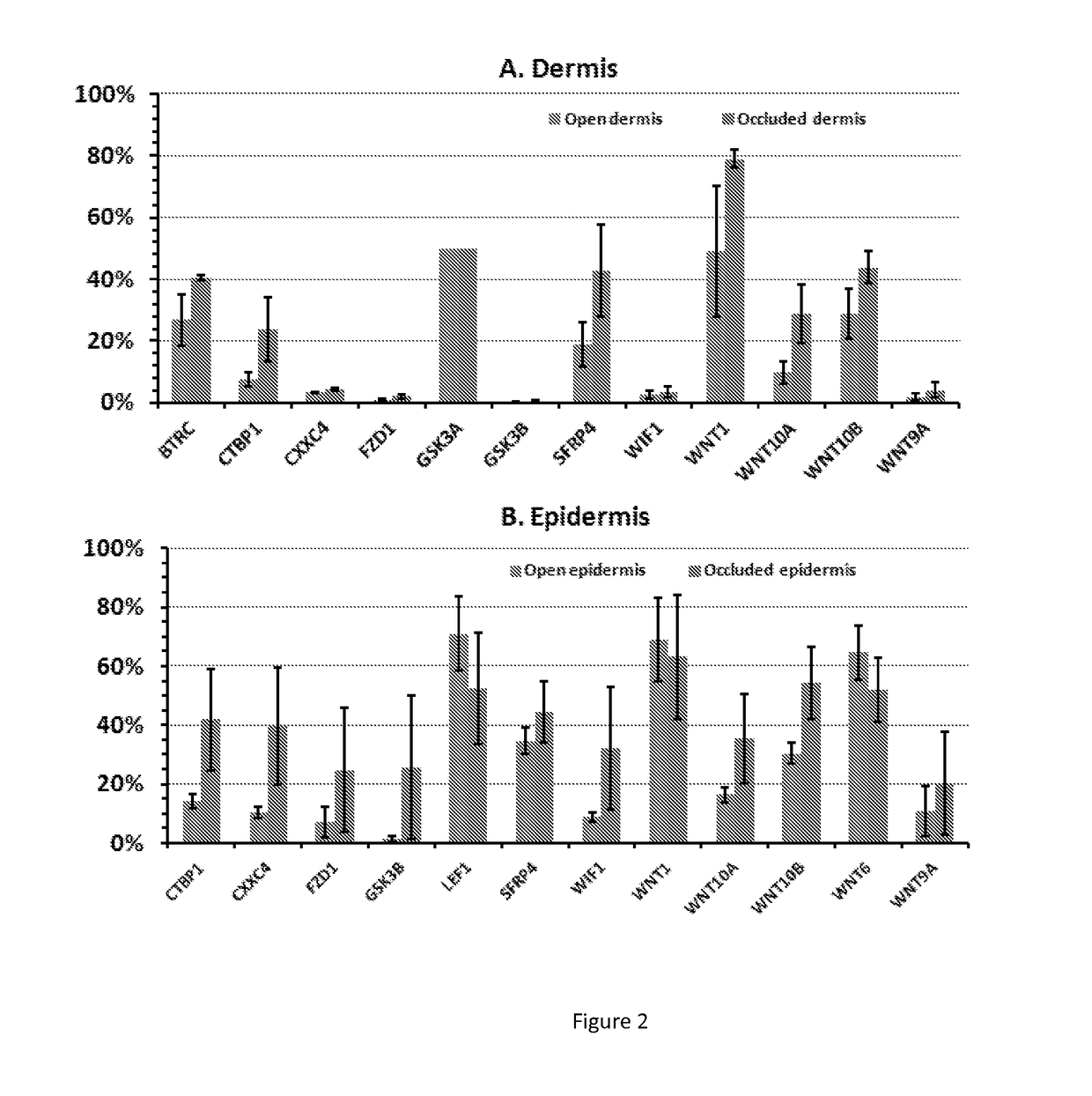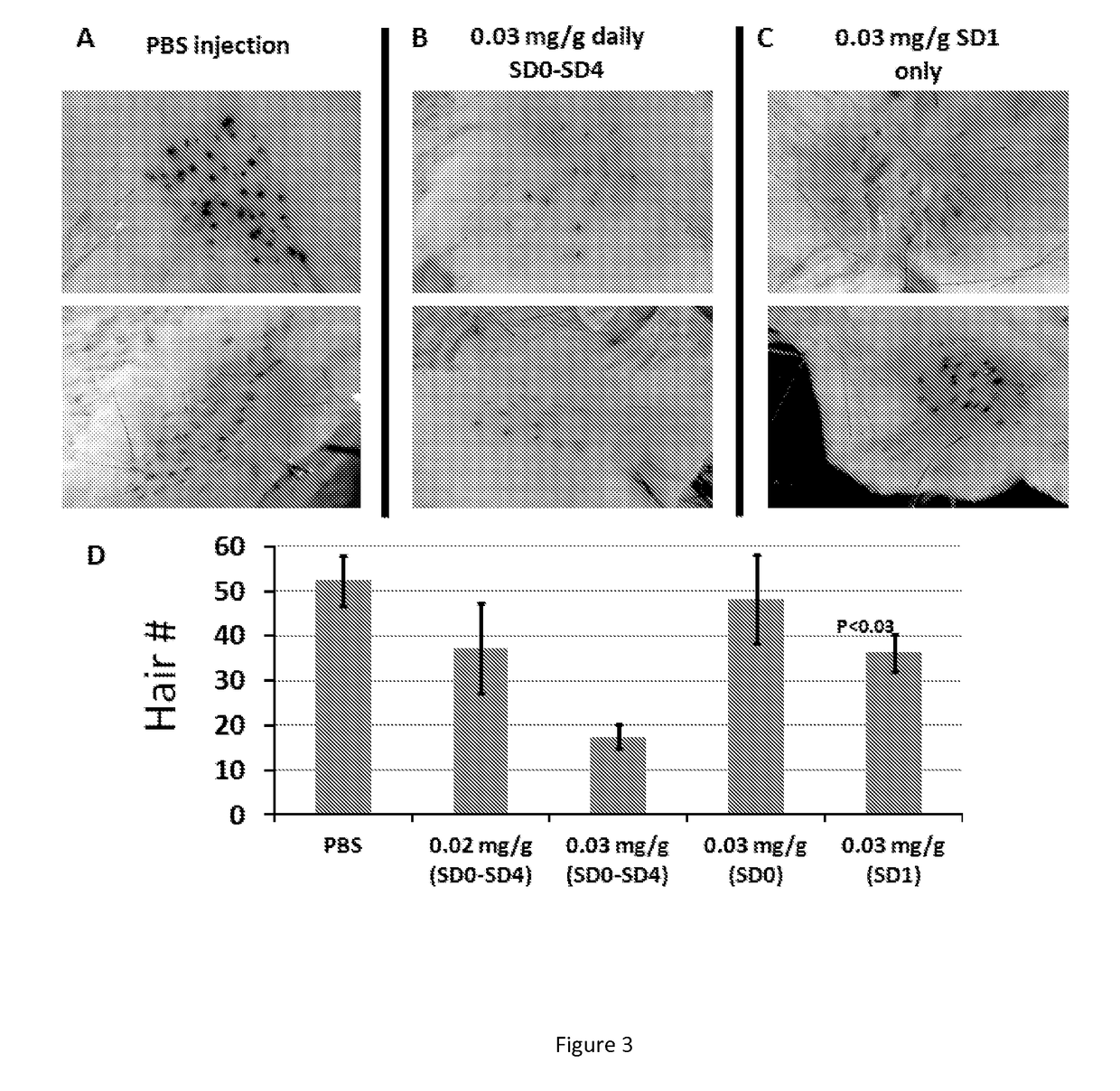5-aza-2'- deoxycytidine and methods of use thereof for promoting wound healing and regeneration
a technology of deoxycytidine and aza-2'-deoxycytidine, which is applied in the field of compositions for promoting wound healing and regeneration, can solve the problems of increased health care costs, loss of function, restriction of movement, etc., and achieve the effect of promoting wound healing
- Summary
- Abstract
- Description
- Claims
- Application Information
AI Technical Summary
Benefits of technology
Problems solved by technology
Method used
Image
Examples
example 1
lation Changes in the Promoter Regions of the Stem Cell Transcription Factor Genes in Open and Occluded Wound Tissues
[0110]Of the 24 stem cell transcription factor genes tested, there are several genes that showed differential methylation patterns in the regenerative (open wound) versus non-regenerative wound (occluded) healing conditions (FIG. 1). In the dermis, a significant inverse correlation between DNA methylation level and regenerative ability of the skin was observed in the promoter regions of the following genes: DNMT3B, Notch2, PCNA, PPARγ, Runx1, Runx2, Stat1 and Stat3 (FIG. 1). The reduction in the level of DNA methylation in the promoters of these genes in the non-regenerative healing suggests that up-regulation of these genes are associated with the loss of regenerative capability of the tissues. In the epidermis, a significant positive correlation between DNA methylation level and regenerative ability of the skin was observed in the promoter regions of the following g...
example 2
lation Changes in the Promoter Regions of the Wnt Pathways Genes in Open and Occluded Wound Tissues
[0111]Of the 24 stem cell transcription factor genes tested, there are several genes that showed differential methylation patterns in the regenerative (open wound) versus non-regenerative wound (occluded) healing conditions. In the dermis, a significant inverse correlation between DNA methylation level and regenerative ability of the skin was observed in the promoter regions of the following genes: CTBP1, Wnt10a, Wnt10b, and SFRP (FIG. 2). In the epidermis, a significant inverse correlation between DNA methylation level and regenerative ability of the skin was observed in the promoter regions of the following genes: WIF1 and Wnt10a. The reduction in the level of DNA methylation in the promoters of these genes in the non-regenerative healing suggests that up-regulation of these genes are associated with the loss of regenerative capability of the tissues.
example 3
Treatment of DNA Methyl Transferase Inhibitor, Aza-Deoxycytidine (Aza-dC), LED to Reduced Regeneration During Wound Healing
[0112]Injection of Aza-dC at 30 μg per gram body weight once a day consecutively for 5 days (from the day scab detached, SD0, to SD4) greatly inhibited the regeneration of hair follicles. The inhibitor effect on hair follicle regeneration may be due to the toxic effect of Aza-dC since the injected mice showed a reduction in their body weight compared to the PBS-injected control mice. To reduce the toxicity of Aza-dC, a single does of 30 μg (per gram body weight) of Aza-dC was injected on either SD0 or SD1. While injection on the day of scab detachment day (SD0) had no effect, a single injection on the following day (SD1) did show inhibition on hair follicle regeneration. (FIG. 3), suggesting that global inhibition of DNA methylation reduces the wound-induced regenerative capability of skin. However, it remains possible that the observed reduction in hair follicl...
PUM
 Login to View More
Login to View More Abstract
Description
Claims
Application Information
 Login to View More
Login to View More - R&D
- Intellectual Property
- Life Sciences
- Materials
- Tech Scout
- Unparalleled Data Quality
- Higher Quality Content
- 60% Fewer Hallucinations
Browse by: Latest US Patents, China's latest patents, Technical Efficacy Thesaurus, Application Domain, Technology Topic, Popular Technical Reports.
© 2025 PatSnap. All rights reserved.Legal|Privacy policy|Modern Slavery Act Transparency Statement|Sitemap|About US| Contact US: help@patsnap.com



